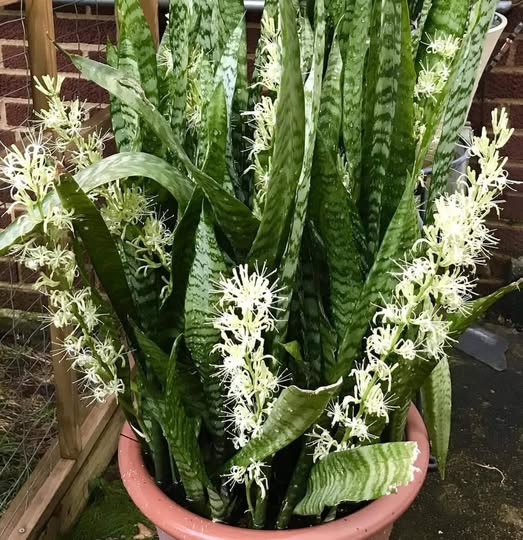During the growing season (spring to summer), feed with a balanced houseplant fertilizer every 4–6 weeks. Skip feeding in the dormant winter months.
Maintain Warm Temperatures:
Sansevieria loves warmth. Keep it in a space where temperatures stay above 60°F (16°C), especially in winter.
Be Patient:
It can take years for a snake plant to flower. Even with perfect care, blooming is never guaranteed—but these tips give your plant the best chance.
Signs Your Sansevieria Might Bloom Soon:
Slowed leaf growth but healthy appearance
A central stalk (flower spike) emerging from the base
Increased fragrance in the area (once flowers open, they often release scent at night)
Serving and Storage Tips (Care After Blooming):
Leave the Flower Spike Until It Withers: Once it’s done blooming, you can snip it off near the base.
Resume Regular Care: Go back to your normal watering and lighting routine.
Don’t Overfeed: Too much fertilizer post-blooming can harm rather than help.
Variations (Sansevieria Types That May Flower):
Sansevieria trifasciata (Laurentii): Classic and most likely to bloom.
Sansevieria cylindrica: Cylindrical leaves, can also flower under good conditions.
Sansevieria moonshine: Beautiful pale leaves; flowering is rare but possible.
FAQ:
Q: How often do Sansevieria plants flower?
A: Flowering is infrequent and unpredictable. Some bloom once a year, others may not for several years.
Q: What do the flowers smell like?
A: They have a light, sweet scent—most noticeable in the evening or early morning.
Q: Will flowering damage the plant?
A: No. Unlike some succulents, Sansevieria does not die after flowering.
Want this as a downloadable plant care guide or a printable care card for your garden? Just say the word!



Yo Make również polubił
Crockpot Barbecue Ribs: Tender, Fall-Off-The-Bone Perfection
Light and Nourishing Cauliflower Soup: A Simple Vegetable Delight
Healthy Tuna Noodle Casserole (Pasta Bake)
Lamb Neck Curry Recipe